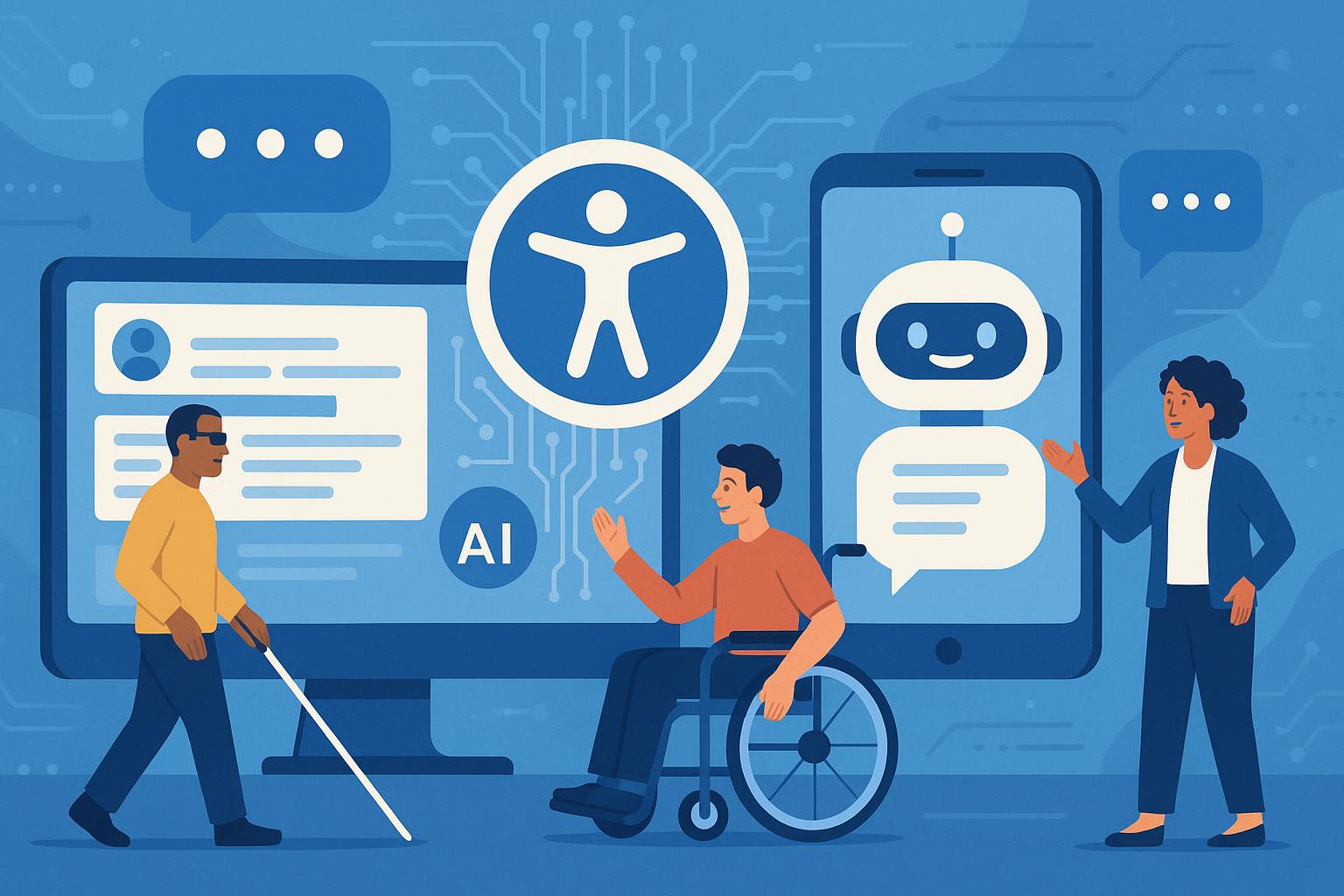Speaking of Accessibility: How AI Chatbots Enhance Digital Application Usability
The evolution of digital interaction has been significantly shaped by the rise of AI-driven chat-based user interfaces (UIs). These advancements have ushered in a new era of more inclusive, accessible, and user-friendly experiences, especially beneficial for users with disabilities. This article explores how AI chatbots improve accessibility and discusses the design of conversational UIs that cater to diverse user needs.
The Role of AI Chatbots in Promoting Accessibility
AI chatbots are transforming web experiences from static pages to dynamic, conversational interactions. Leveraging natural language processing (NLP) and machine learning, these systems understand and respond to user inquiries in a human-like manner. For individuals with disabilities, chatbots provide an essential alternative to traditional input methods such as keyboards and mice, thereby reducing barriers to accessing information and services.
Designing Conversational UIs for Diverse Needs
Accessible chatbot design requires consideration of several factors to meet the needs of users with disabilities effectively:
- Speech Recognition and Synthesis: Essential for users with visual impairments or physical limitations, these technologies enable voice navigation, making digital services more accessible.
- Contextual Understanding: Chatbots designed to understand the context of interactions can offer more effective support and reduce misunderstandings, which is vital for users with cognitive disabilities.
- Personalization: Adapting conversations based on individual user preferences and requirements can enhance accessibility and user satisfaction.
- Visual Accommodations: For chatbots that include visual elements, adherence to accessibility guidelines such as providing alt text for images and ensuring high contrast is crucial for users with low vision.
Real-World Applications Transforming Industries
AI-powered chatbots are making significant impacts across various sectors by enhancing the delivery of services and improving accessibility:
- Healthcare: Patients interact with AI assistants to manage health-related tasks such as understanding symptoms, scheduling appointments, or accessing lab results, bypassing complex navigation and paperwork.
- Education: AI chatbots function as personal tutors, assisting students with learning materials and administrative tasks, thus making education more accessible for those who face challenges in traditional learning settings.
- E-commerce: Chatbots improve shopping experiences by allowing users to verbally describe their needs, thereby assisting those with mobility or cognitive impairments.
Technical Challenges and Considerations
Despite their potential, several technical challenges must be addressed to fully leverage AI chatbots for accessibility:
- Data Privacy and Security: It is critical to ensure the privacy and security of user data, especially sensitive information like health records or personal identifiers.
- Error Handling: Effective mechanisms are necessary to manage misunderstandings or miscommunications, maintaining trust and reliability in AI systems.
- Scalability: With increasing demand, it is crucial that these systems scale efficiently without compromising performance or accessibility features.
Conclusion
AI chatbots are revolutionizing digital applications by creating more accessible and user-friendly interfaces. By focusing on the unique needs of users with disabilities, these tools not only comply with accessibility standards but also promote inclusivity in digital content. As these technologies evolve, the potential for AI-driven conversational UIs to transform industries and enhance lives becomes increasingly evident. Chatbots are proving to be more than just supportive tools—they are pivotal to the future of digital interaction, ensuring inclusivity and accessibility for all users.
Embracing the capabilities of AI and chat-based interfaces is essential for professionals across all industries, as these technologies are integral to developing the future of digital engagement, ensuring that digital advancements leave no one behind.












